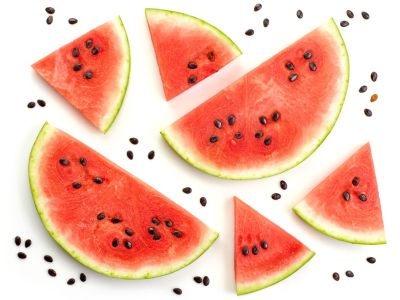Will Store-Bought Melon Seeds Grow
Unfortunately, most melons you buy in the grocery store will be hybrids. These fruits are bred and developed primarily for their ability to ship well and maintain the proper ripeness on grocery store shelves. The problem with most grocery store melon seeds is they won’t produce the same type of melon from which they came. The reason is that hybrids are crosses between two or more varieties of melons. The melon you buy is from one generation, but the seeds inside the melon are from the next generation. These store-bought melon seeds contain a different mix of genes than the melon you purchased. These genes can come from the melon you bought, but also from that melon’s ancestors. In addition, the seeds from a store-bought melon can contain genetic material from a totally unrelated melon. How is that possible? Melons are monoecious, which means they produce separate male and female flowers on the same plant. Bees and other pollinators transfer the pollen from the male flower to a female one. In a farmer’s field, where breeding is not controlled, bees can pollinate female flowers with pollen from many other types of melons. When you plant melons from the grocery store seeds you save, you’re unlikely to get the same type of melon you purchased. However, you might get something totally unexpected. If you’re feeling adventurous, it can be a fun experiment.
How to Plant Melons from the Grocery Store
In order to grow seeds from a store-bought melon, it’s essential the seeds are harvested, cleaned, and stored properly. In addition, many grocery store melons were picked before they were ripe, which can result in immature seeds that won’t germinate. Luckily, there’s a method to figure this out. Step one: Cut the melon in half and carefully remove the store-bought melon seeds and membrane. The riper the melon, the more likely the seeds will grow. So, don’t fret if you left the melon on the countertop until it was overripe. Step two: Remove as much of the stringy membrane as you can, then drop the seeds into a dish of water. Adding a drop of dish soap helps remove sugary residue from the seeds. Step three: You may notice some of the seeds from a store-bought melon will sink, while others float. This is good. The viable seeds sink and the dead seeds float. Skim off the floaters and toss them. Step four: Use a strainer to catch the remaining seeds, then rinse well with cool water. Next, place the grocery store melon seeds on a paper towel to dry for several days. Step five: When the store-bought melon seeds are completely dry, place them in an envelope. Put the envelope in a clean jar with a desiccant, such as dried rice or powdered milk. Seal the jar with a lid. Step six: Place the jar of grocery-store melon seeds in the refrigerator until it’s time to plant melons in your area.
